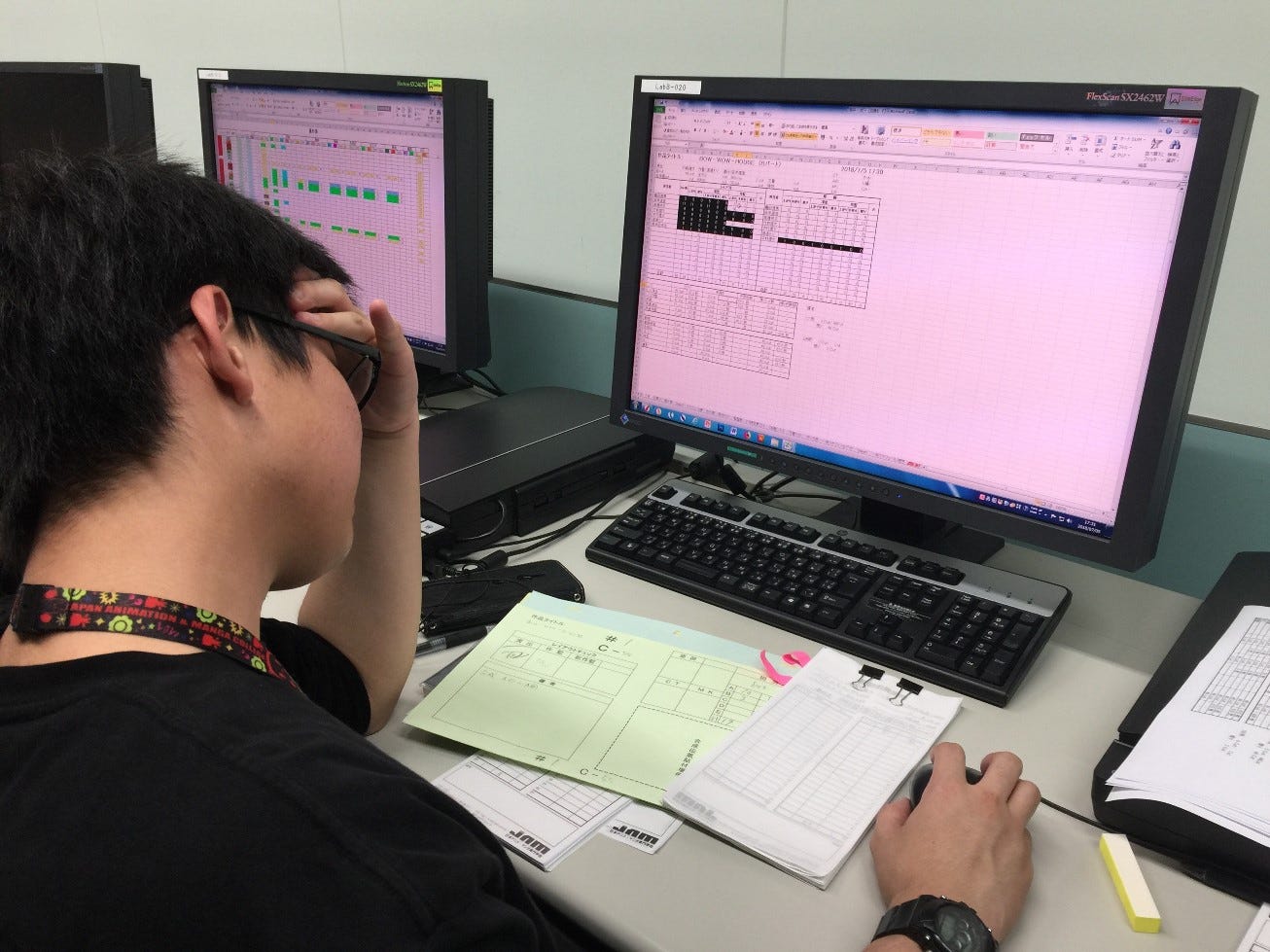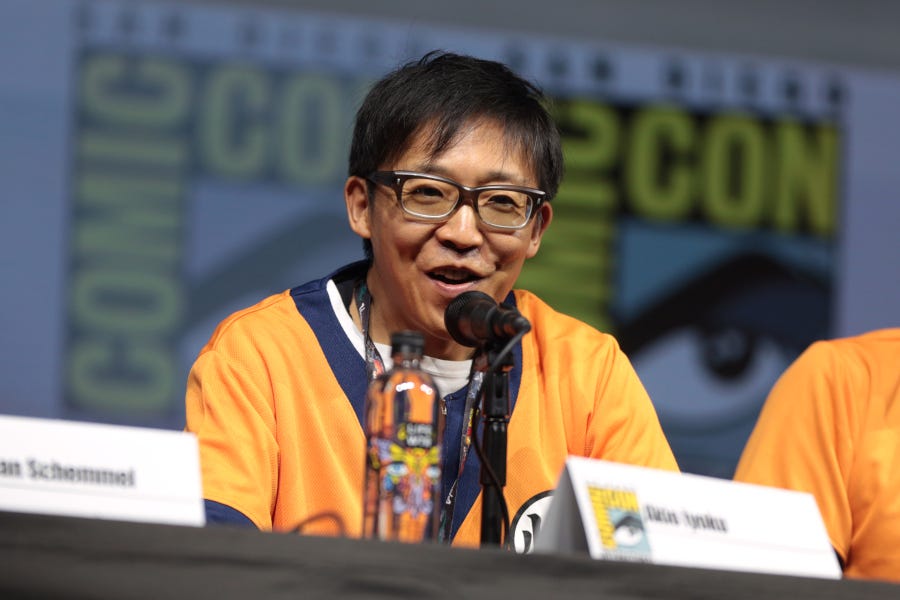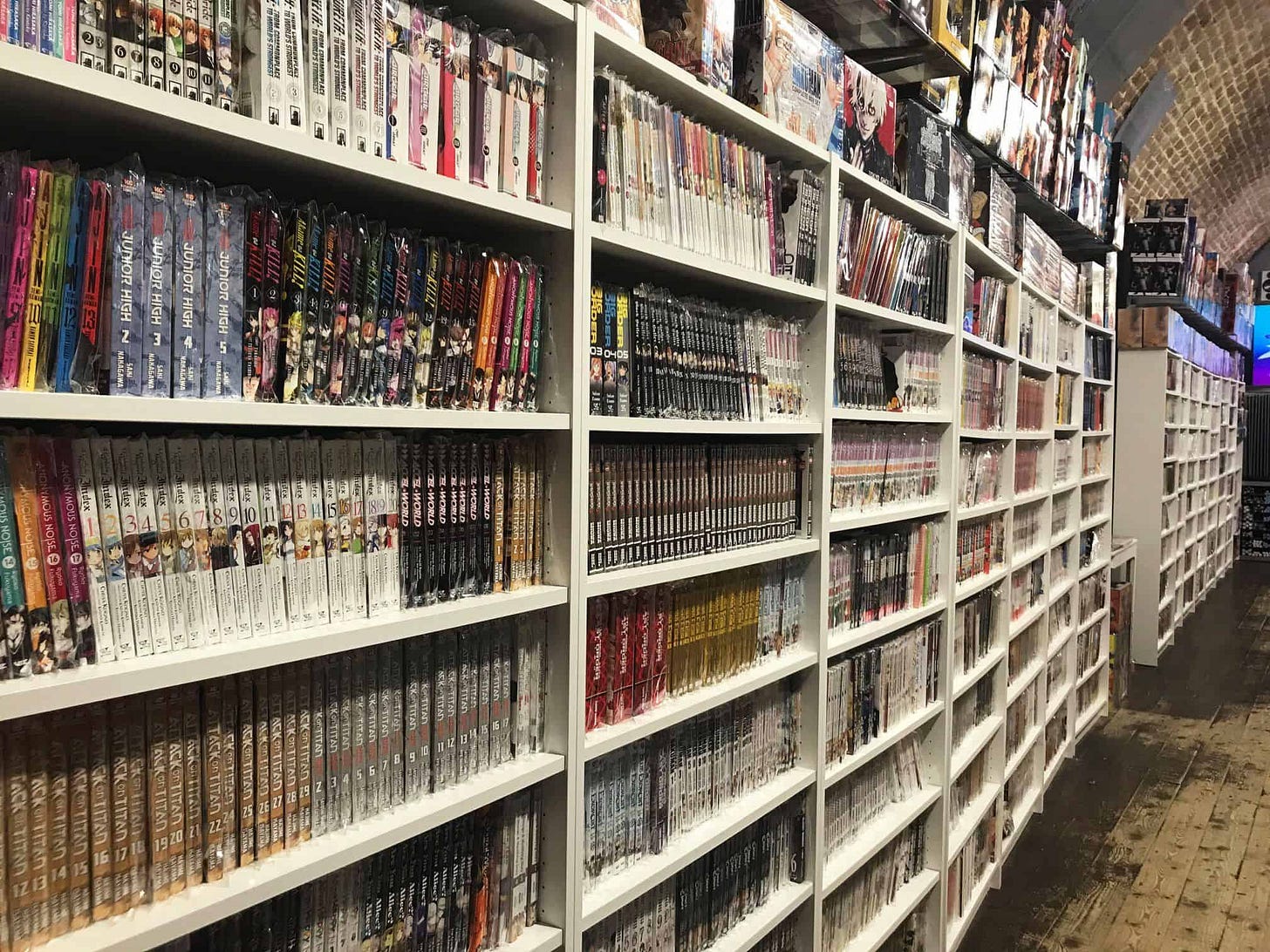Anime production assistant pay scrutinized
Plus: Shueisha may lose some 'Dragon Ball' IP rights; Lessons from live-action 'One Piece'; Survey shows support for regulation of AI use in anime; and more
This is your weekly Animenomics briefing, covering the business of anime and manga. Today is Wednesday, September 20, 2023.
In case you missed it: Sunao Katabuchi, who directed the Japan Academy Prize-winning In This Corner of the World, showed a teaser video of his upcoming film The Mourning Children: Nagiko and the Girls Wearing Tsurubami Black at the Kyoto International Manga and Anime Fair.
Studios’ anime production assistant pay draws scrutiny

Finances in the anime industry are often opaque, so when information on anime worker pay rates are made public, they spark lively discussions, not only on social media, but also within the industry.
Driving the story: Anime studio Tonari Animation, who does subcontract work for other major Japanese studios, tweeted last week that it was hiring anime production assistants to work at its Tokyo branch.
Pay starts at ¥150,000 (US$1,000) a month for a half-time arrangement and ¥250,000 (US$1,700) a month for a full-time position with benefits.
What happened: Many X (Twitter) users who saw the tweet didn’t consider the figures to be livable wages since Tokyo has a reputation for being expensive.
Yes, but: Industry insiders like French animator Thomas Romain were quick to point out that Tonari Animation’s pay rates for the role are competitive for an anime studio in Japan.
Zoom out: Anime worker pay is determined by market forces beyond the control of many studios, especially subcontractor studios.
Budgets are determined by planners at the production committee level, and studios often don’t have a seat at the table to influence how much they are paid to produce anime.
What they’re saying: Tonari Animation CEO Jarrett Martin told Animenomics in an interview that the studio’s status as a subcontractor doesn’t prevent them from generating revenue and paying salaries on par with the rest of the market.
“The only time [subcontractors] aren’t making as much money is if they’re a budget option, and Tonari Animation is not a budget option studio,” Martin says.
Martin points out budget subcontractor studios located outside Japan have the ability to charge one-tenth to one-quarter of the average price because of lower labor costs in those territories.
Some context: Production assistants are anime studios’ workhorses, compiling and delivering materials between production sites and maintaining contact with the dozens of artists who work on a given anime episode.
They are critical in keeping a production schedule on track, but a Weekly Toyo Keizai report found that the average anime episode budget of ¥31.2 million (US$211,000) allocates less than 10 percent toward these jobs.
‘Dragon Ball’ rights deal signals change for publishers

Manga editor Akio Iyoku, who is seen as Shueisha’s closest employee to Dragon Ball creator Akira Toriyama, is leaving the publisher and creating an independent company to manage rights for the series, Weekly Bunshun magazine has learned.
Why it matters: Dragon Ball, whose original manga turns 40 years old next year, is experiencing a worldwide resurgence that has driven sales related to the property to new highs.
By the numbers: Sales of Dragon Ball media and merchandise topped ¥550 billion (US$3.7 billion) in 2022, according to estimates by entertainment industry analyst Atsuo Nakayama.
Bandai Namco saw toy and video game sales related to Dragon Ball climb to a record ¥145 billion (US$978 million), outperforming One Piece by 67 percent, for the fiscal year ending March 2023.
Dragon Ball remains especially popular overseas, as Toei Animation’s license sales for the anime last fiscal year are almost double overseas (¥11.6 billion, or US$78 million) compared to within Japan (¥6.1 billion, or US$42 million).
How it happened: Dragon Ball’s market presence stagnated in the late 2000s and early 2010s, but back-to-back Dragon Ball Z films written by Toriyama in 2013 and 2015 reignited interest in the franchise in a new generation of audiences.
Toriyama was inspired to start working on the series again after the events of the Tohoku earthquake and tsunami.
Where things stand: Iyoku is negotiating with Shueisha for Capsule Corporation Tokyo—the new entity named after a company in the story—to take over the intellectual property rights of Dragon Ball video games, anime, and other non-manga media.
Bunshun says Iyoku’s decision to leave Shueisha comes after he was asked last year to step down from leading the publisher’s Dragon Ball team and move to a different role.
The magazine also says that Iyoku wants to recruit former team members to the new company, but Nakayama points out this means renegotiating clauses that bar individual employees from making independent contracts with an artist.
Bottom line: Nakayama says Shueisha and other publishers could face a future where manga artists exercise intellectual property rights on their own and sign their own business contracts without the involvement of publishers.
Clippings: Manga dominates graphic novels sales in UK

UK manga sales have fallen 9 percent so far this year to about £16 million (US$20 million), but they are still triple the level from the last pre-pandemic year of 2019. Nearly 1.5 million manga volumes have been sold this year. (The Bookseller🔒)
Crunchyroll chief operating officer Brady McCollum, who led the streamer’s international expansion prior to and during its acquisition by Sony, is leaving the company after 15 years. (Deadline)
YOASOBI’s single “Idol”, used as the ending theme song of Oshi no Ko, ended a 21-week run at the top of the Billboard Japan Hot 100 chart, a record for most consecutive weeks at number one. (Billboard)
Captain Tsubasa manga creator Yoichi Takahashi was inducted into the Japan Football Hall of Fame for his role in inspiring soccer players and fans in Japan and abroad. (The Mainichi)
Live-action ‘One Piece’ learned from ‘Cowboy Bebop’
“You have to have a buy-in from the creator. The creator of ‘Cowboy Bebop’ did not want anything to do with it. Not that he was disagreeable about it; he just didn’t want to be involved, it’s not what he wanted to do. So having the buy-in of the creator, having [Eiichiro] Oda buy into this and bless it, made a big difference.”
— Marty Adelstein, television producer and Tomorrow Studios founder and CEO
Context: Adelstein spoke with Deadline about lessons from the success of his studio’s live-action adaptation of One Piece for Netflix and how it differs from the production of Cowboy Bebop.
After placing at the top of Netflix’s Global Top 10 television rankings for a third week, the series has been renewed for a second season.
Yes, but: Although scripts for the second season of One Piece are completed, production can’t begin until the Hollywood SAG-AFTRA strike is resolved, Variety reports.
Public, anime industry support the regulation of AI use
Anime businesses and workers interested in using artificial intelligence (AI) in the field face a challenge in convincing the general public that the technology is beneficial to the industry, a new survey from the Nippon Anime & Film Culture Association (NAFCA) found.
Driving the story: Three out of four survey respondents (75.5 percent) who don’t work in the anime industry favor some sort of regulation of AI technology, with 28.2 percent saying AI should be fully regulated.
Among respondents employed in the anime industry, a lower proportion of 57 percent—still in the majority—says AI use should be regulated in some way.
Why it matters: Japan’s copyright law was revised in 2018 to allow machine-learning engineers to train AI models on copyrighted works, yet 87 percent of all respondents believe such uses should be regulated, especially when prohibited by the rightsholder.
Zoom in: Support for regulation is especially high—four out of five respondents—when using generative AI to recreate the voice of people, whether it be a celebrity or an ordinary person.
Three out of five would regulate the use of AI-generated faces for anime and manga characters, and one out of three support regulating AI-generated streetscape and landscape art.
Reality check: Aside from a highly-criticized AI demonstration by Netflix earlier this year, there has been little actual progress in introducing the technology at anime production studios.
“However,” journalist Tadashi Sudo of the Animation Business Journal writes, “the survey results will likely serve as a guideline for future development and implementation.”
“If there is something that can reduce the tedium that’s required to make anime happen, I think [AI] would be adopted, but we’re a ways off from that having any impact in the short term,” says Jarrett Martin, the Tonari Animation CEO.
Animenomics is an independently-run and reader-supported publication. If you enjoy this newsletter, consider sharing it with others.


